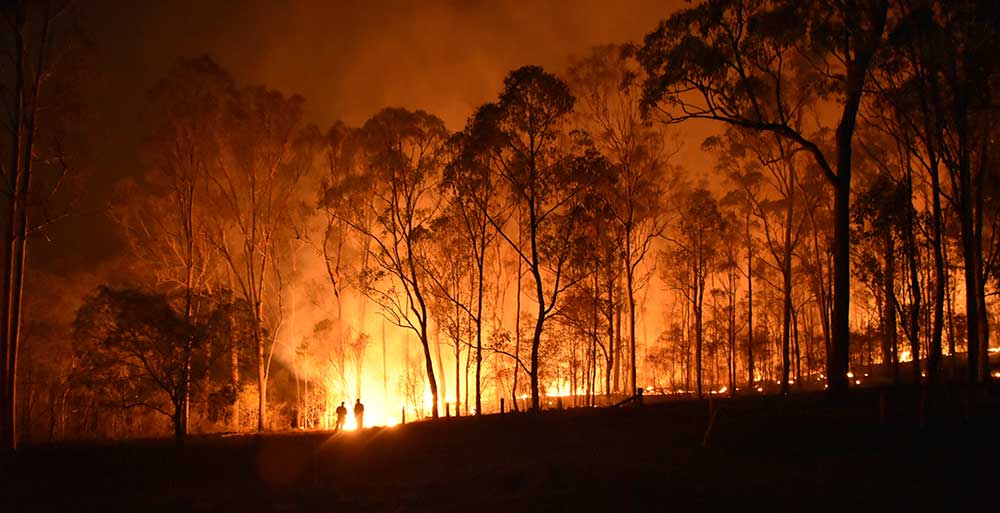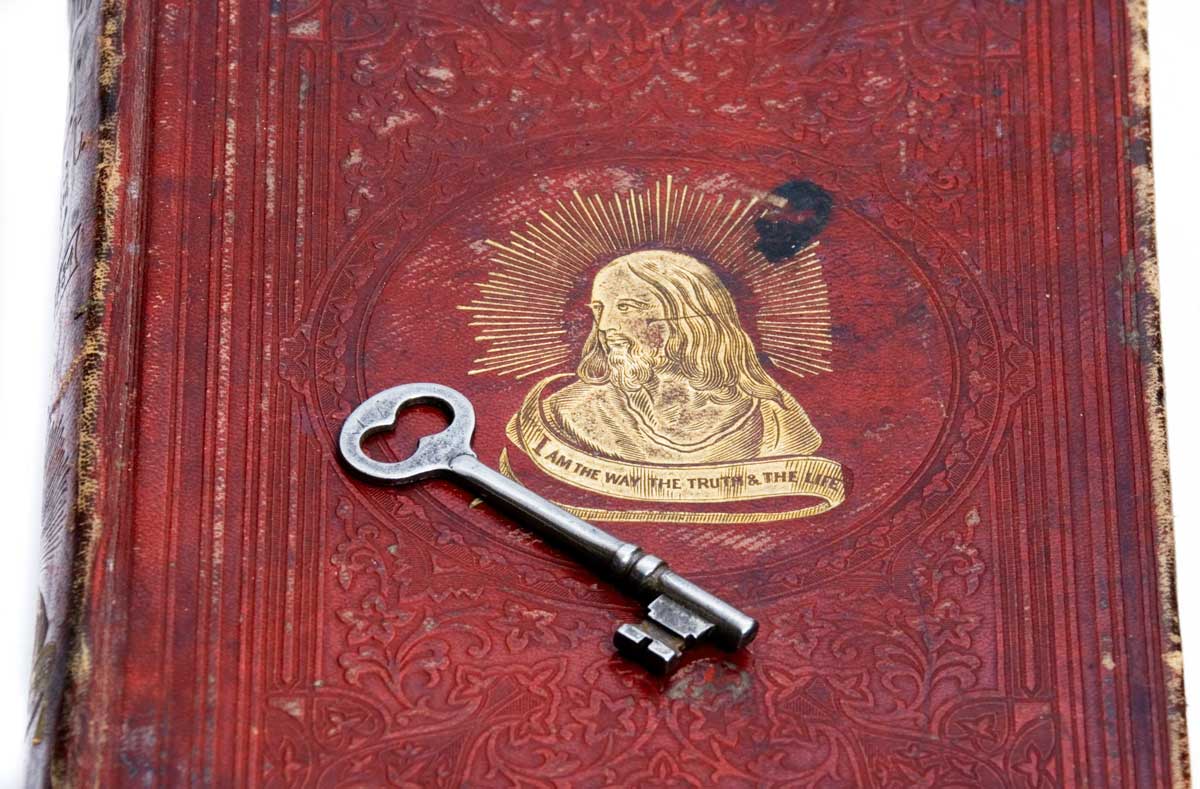A Divine Fire Escape
In the Eastern churches, the service of matins includes several odes presenting images of salvation from the Old Testament. There is an ode on Moses and Israel escaping Egypt through crossing the Red Sea, another on Jonah’s three days in the belly of the whale and escape from the depths of the sea, and two odes about the three young men in the fiery furnace who miraculously escape. In all three stories, an escape is accomplished following a trial in a place of danger: in crossing the waters of the Red Sea, in the belly of the whale in the depths of the sea, and in the flames of the fiery furnace, where suddenly we find “four men loose, walking in the midst of the fire, and they are not hurt; and the appearance of the fourth is like a son of the gods” (Dan. 3:25). There is Christology in all three stories.
I was especially reminded of the fiery furnace and the escape of Shadrach, Meshach, and Abednego many years ago by the title of a book that had nothing to do with the book of Daniel: Young Men and Fire by Norman Maclean (author of A River Runs Through It and Other Stories).Maclean tells, as the subtitle puts it, A True Story of the Mann Gulch Fire, a tragic tale of both death and survival.
While I’ve always connected the book’s title with Daniel’s three young men, it was not until years later that I realized that its story offers an image that has deepened my understanding of how Christ’s death opened the way for salvation. A dramatic act in the story of the fire is an image of salvation, that is, of Christ’s saving death. Moreover, the responses of the young men in the story to that act parallel our responses to Christ. But first, I must summarize the story.
The Blow-Up
In the late afternoon of August 5, 1949, fifteen men parachuted into the Montana wilderness to put out a newly spotted forest fire. Most, save the foreman, Wagner “Wag” Dodge, and the second-in-command, William Hellman, were college boys from around the country. They floated down into Mann Gulch, which empties into the Missouri River. Next to Mann is Meriwether Gulch, named for Meriwether Lewis, who had camped there on July 19, 1805, during the Lewis and Clark journey of discovery. The fifteen smoke-jumpers, as they were called, had their own journey of discovery before them as they shed their chutes in the gulch next door.
After gathering themselves and their equipment, they started downhill toward the flames at the bottom of the V-shaped gulch. But the fire suddenly exploded into what is known as a “blow-up.” The crew was potentially threatened by a fire that had jumped to their side of the gulch —and it was now running uphill in their direction, driven by strong winds and fueled by dry, waist-high grass.
The foreman, Dodge, ordered his crew to hurry back up the hill, but, because of its steepness, to do so on a more manageable angle of ascent, away from the fire. As the flames raced through the dry grass and brush towards them, the men were ordered to drop their equipment and run for their lives. Two of the fastest boys, Rumsey and Sallee, abandoned the angular path of ascent and headed straight up the slope, thinking they could make it to the top of the ridge in time and escape the fire.
The Remedy
Then Dodge quickly reassessed the size and speed of the fire, the distance his men had run, the distance the fire had run in chasing them, and the distance his men had yet to go to reach safety. He realized that he and the remaining twelve men behind him wouldn’t make it out on their own legs.
Dodge then did something neither he nor anyone else in the forest service had been trained to do. He stooped down, struck a match, and lit another fire in the grass. As crew members ran past him, he called out, “This way!” —beckoning them into the fire that he had started. Dodge then “walked through the flames toward the head of the fire into the inside and continued to holler at everyone as they went by.” Because of the smoke, he couldn’t see clearly, but there seemed to be a slight pause —then the voice of the second-in-command boomed out, “To hell with that! I’m getting out of here,” and the others ran with Hellman away from Dodge in the fire. They thought he had “gone nuts.”
Alone, Dodge, having entered the fire he had set, then fell to the ground. He knew he had to lie down close to the ground near the flames in hot ashes where there might be some oxygen left. He later said that when the main fire passed over and around him, he was lifted off the ground two or three times. “This lasted approximately 5 minutes.” Dodge was saved through an “escape fire.”
The Others
Rumsey and Sallee, who climbed straight up to the top, barely made it; below, on the other side of the ridge, they stumbled upon a rock slide large enough to protect them when the fire, after pausing briefly at the top of the ridge, spilled over and rushed down at them. They escaped by finding a place where the fire could find no fuel and bypassed them, just as Dodge, lying in the burnt grass, was preserved in a sanctuary that lacked fuel for the fire.
Hellman, after consigning Dodge’s fire to hell, decided to run straight up toward the top; he made it, but not without suffering such severe burns that he was dead before noon the next day. The other crewmembers who eschewed Dodge’s escape fire were caught by the inferno. Ten died on the slope, and one died in the hospital the following morning —a dozen victims in all. Dodge said at a later review that his crew “didn’t seem to pay attention. That is the part I didn’t understand. They seemed to have something on their minds —all headed in one direction.” Running for their lives, surely, was on their minds, as the innovative escape fire seemed a strange and deadly place.
Dodge’s crew members had only the knowledge of their training, and when that failed them, they were faced with a choice between their raw survival instinct and following the orders of a foreman who they thought had lost his mind. Twelve men died because in their ignorance they refused their foreman’s strange directions, unable to recognize that they could escape the fire by going into his fire. Wag Dodge escaped burning to death by fighting fire with fire. Only in hindsight was the right choice obvious.
An Image of Salvation
I have been doubly haunted by this story since I read it 30 years ago. First, I have come to see its drama as a metaphor for how we are saved by Christ’s death, and second, I now see the choices and responses of the young men in the tragedy as metaphors for the Christian life.
As to salvation, in addition to Christ “destroying the writing of our sins” on the Cross, he also conquered the power of death by his own death. The metaphysics of this are a mystery, perhaps like the “deeper magic” that C. S. Lewis appeals to in his Narnia tale, which overturned the Deep Magic in Aslan’s death. We know that man was consigned to death, with no escape in sight apart from the promise of God to save him somehow. Death surrounds us and eventually catches up with every man. Modern man may think that progress in science will eventually allow us to escape mortality on our own, but this is an illusion.
Into this world of implacable death came the divine Son, who entered death, physical death, on the Cross. While death ended his physical life, it could not consume him: “God raised him up, loosing the pangs of death, because it was not possible for him to be held by it” (Acts 2:24). Further, his body experienced no decomposition: “Thou wilt not leave my soul in hell, neither wilt thou suffer thine Holy One to see corruption” (Ps. 16:10). Christ, once raised from the dead, became a priest forever, “by the power of an indestructible life” (Heb. 7:16).
The death of the Son of God was not like that of any other man, and it became our means of escape. Death was stopped in its tracks as the crucified Body of Christ became the one place in space and time where death held no dominion. His Body is the means of our escape. The fire of his voluntary death as God incarnate swallowed up the fire of man’s mortality. In Christ, we may escape the permanent death we would otherwise suffer without the protection of his saving Body, of which we have become truly members.
An Image of Christian Life
To escape the fire of death, we must answer Jesus’ summons to take up our crosses and follow him, to be “crucified with Christ,” as Paul confesses. But his summons is not readily followed.
The responses of the young men to Dodge’s summons remind me of the disciples’ initial responses to Jesus’ announcement of his voluntary death. Peter (his “second in command”?) rebuked him. (He might just as well have said, “To hell with that!”) Two more times Jesus announced his voluntary crucifixion, but the disciples, “greatly distressed,” “understood none of these things.” One can hardly blame them. Crucifixion was a shameful death.
Dodge’s escape fire was a strange new thing. Now, with hindsight, firefighters know how an escape fire offers protection. And the disciples, after the Resurrection, understood Christ’s death as salvation, and all, save John, died a martyr’s death for Christ. And the Cross became our symbol of victory.
To follow Christ requires a daily dying to self. Although we have hindsight and know Christ rose from the dead, too often we think that simply by professing Jesus, we’re covered, and that picking up our daily cross can be safely postponed. But as the Canadian preacher Alfred B. Simpson wrote, “Suffering is essential to profound spiritual life. . . . Unless we are born into a different race than Adam’s, the first real opportunity for unselfishness will bring into our lives the anguish of crucifixion.”
The Final Word
Anguish often lies at the border between life and death. Maclean, at the end of his ponderings, relates that the two young men who survived the fire by running straight to the top told him that
as they went up the last hillside, they remember thinking only, “My God, how could you do this to me? I cannot be allowed to die so young and so close to the top.” They said they could remember hearing their voices saying this out loud.
Their cries came from a “pity in the form of self-pity,” which was “transformed into some divine bewilderment” that “addresses its grief to the universe” and “cries out to it.” Then this:
The most eloquent expression of this cry was made by a young man who came from the sky and returned to it and who, while on earth, knew he was alone and beyond all other men, and who, when he died, died on a hill: “About the ninth hour he cried with a loud voice, Eli, Eli, lama sabachthani?”
On Golgotha, Jesus absorbed the full brunt of man’s alienation and suffering in anguish, expressed in that cry of dereliction. And that cry was answered, divinely transformed; in the words of the Paschal hymn of the Orthodox Church: “Christ is risen from the dead, trampling down death by death, and upon those in the tombs bestowing life!” The Forsaken is now Lord of all. He destroyed death by dying, killed mortality’s fire with the fire of his divinity —and we now sing the songs of victory.
James M. Kushiner is the Director of Publications for The Fellowship of St. James and the former Executive Editor of Touchstone.
subscription options
Order
Print/Online Subscription

Get six issues (one year) of Touchstone PLUS full online access including pdf downloads for only $39.95. That's only $3.34 per month!
Order
Online Only
Subscription

Get a one-year full-access subscription to the Touchstone online archives for only $19.95. That's only $1.66 per month!
bulk subscriptions
Order Touchstone subscriptions in bulk and save $10 per sub! Each subscription includes 6 issues of Touchstone plus full online access to touchstonemag.com—including archives, videos, and pdf downloads of recent issues for only $29.95 each! Great for churches or study groups.
Transactions will be processed on a secure server.
more from the online archives

28.3—May/June 2015
Of Bicycles, Sex, & Natural Law
Describing Human Ends & Our Limitations Is Neither Futile Nor Unloving by R. V. Young
calling all readers
Please Donate
"There are magazines worth reading but few worth saving . . . Touchstone is just such a magazine."
—Alice von Hildebrand
"Here we do not concede one square millimeter of territory to falsehood, folly, contemporary sentimentality, or fashion. We speak the truth, and let God be our judge. . . . Touchstone is the one committedly Christian conservative journal."
—Anthony Esolen, Touchstone senior editor









